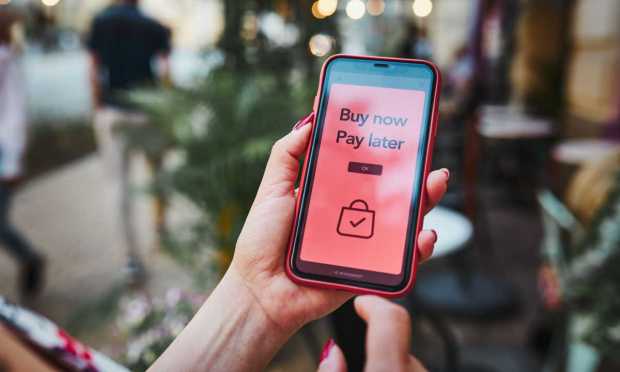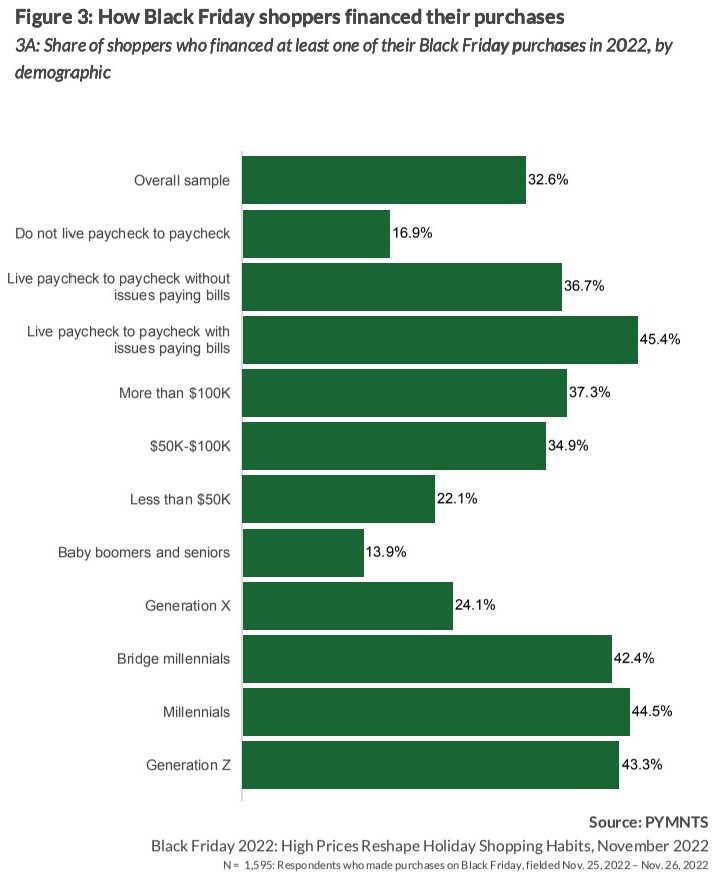Digital Payments Give Retailers an Edge With Credit-Leaning Shoppers

More shoppers are turning to financing alternatives to make the holidays merry and bright.
This includes one-third of Black Friday shoppers, who funded their purchases with credit cards, loans and other alternatives, including buy now, pay later (BNPL). Retailers may consider this an opportunity to boost their digital payment and financing offerings, making it easier for consumers to purchase holiday items.
Consumer spending rose 0.8% in October, the Commerce Department announced last week. However, a deeper dive into the release reveals that disposable income rose just 0.7% in the same time frame, falling 0.1% shy of the rise in consumer spending.
These figures are in line with PYMNTS’ recent census-balanced survey of 3,074 consumers, “Black Friday 2022: High Prices Reshape Holiday Shopping Habits,” which found that shoppers are cutting back on holiday shopping overall this year, impacting Black Friday revenue numbers.
Shoppers relied on credit cards, contactless credit cards and BNPL for their Black Friday purchases a combined 11% more than cash. The consumers who tapped credit lines, applied for loans or used installment plans financed at least half of their Black Friday purchases with these options. For those shoppers participating in Black Friday, relying on credit and other loans may have been out of necessity rather than convenience, as the rising cost of essential goods outpaced paychecks in many cases.
Additionally, 56 million U.S. consumers say they will not do any holiday shopping at all in 2022 — up from 39 million in 2021. This corresponding dip in overall holiday shoppers is proportional to the decrease in Black Friday shopping activity.
A major reason for this cutback is due to 60% of Americans living paycheck to paycheck, representing a 4% rise from the same time last year.
Due to this necessary belt tightening, just 79% of overall consumers plan to shop for the 2022 holiday season, representing a 10% decrease from 2021. Additionally, just over 25% of retail shoppers plan to spend less this holiday season than last year.
PYMNTS has been tracking this dip in consumer sentiment long before the holiday season. As part of an ongoing PYMNTS study, the October “Consumer Inflation Sentiment” report found that 89 million Americans are already preparing for a recession. The average consumer expects the inflation crisis to continue until April 2024 and is adjusting their spend accordingly. Among shoppers whose incomes did not keep pace with inflation, 74% are buying fewer nice-to-have items than they did a year ago. Similarly, 64% are switching to cheaper merchants and 53% are purchasing lower-quality products.
A further PYMNTS finding could assist retailers in adapting to the current economic climate. Omnichannel commerce, where multiple payment methods combine for a seamless retail experience, saw growth during Black Friday 2022, with one in four shoppers using a mix of online and in-store shopping to make their purchases.
In addition to streamlining customer use of BNPL or credit for purchases, digital-minded retailers should consider other options to meet consumers’ changing needs. These might include a more seamless buy online, pick up in-store (BOPIS) experience or real-time inventory data to help customers ensure the item they want is in stock at a nearby brick-and-mortar location.
Retailers can’t change the economic climate, but they can shift their strategies to better meet the needs of the omnichannel or credit-reliant shopper — which could also help build a more loyal customer base.
